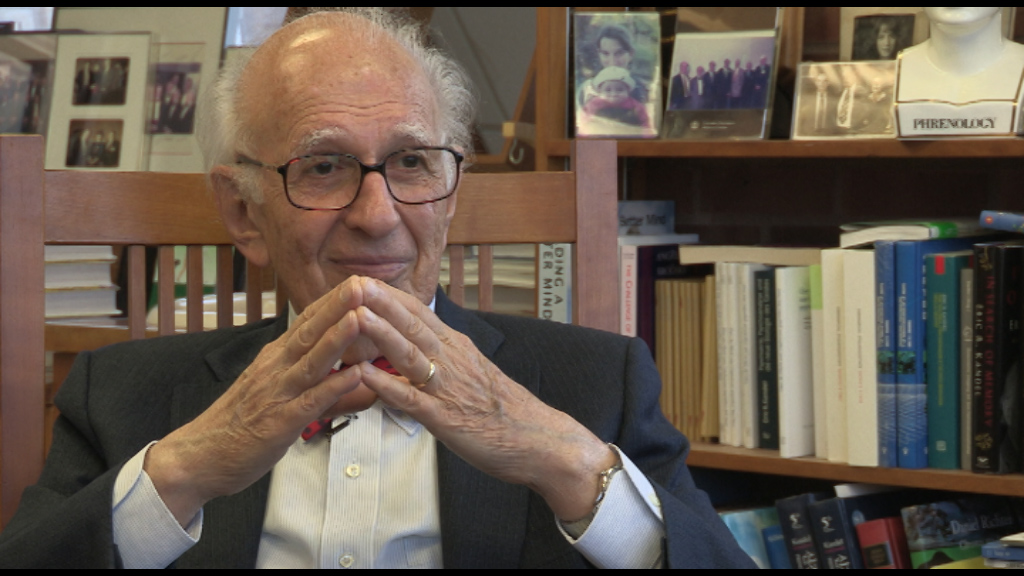NEXT STORY

Mapping the ganglion
RELATED STORIES

NEXT STORY

Mapping the ganglion
RELATED STORIES


|
Views | Duration | |
|---|---|---|---|
| 31. An exceptionally rewarding year | 75 | 01:14 | |
| 32. Driven to study Aplysia by a sense of adventure | 78 | 01:40 | |
| 33. Being in the right place at the right time | 86 | 01:24 | |
| 34. Setting up my own lab | 76 | 01:28 | |
| 35. Mapping the ganglion | 69 | 00:41 | |
| 36. Recording connections between cells | 65 | 02:27 | |
| 37. Moving to New York | 63 | 02:12 | |
| 38. Division for Neurobiology and Behavior | 95 | 05:08 | |
| 39. Exploring the mechanism behind habituation and dishabituation... | 132 | 04:41 | |
| 40. A good syllabus is like a symphony | 63 | 03:17 |


Kuffler was very supportive of a reductionist approach. He was skeptical about my ability to handle the behavior, but he liked very much the stuff coming out of Aplysia, and I once gave a seminar to the Harvard group and they were actually quite supportive of it. They weren't prepared to move in that direction, but they were quite supportive.
So when I came back, I realized that I was now setting up my own lab, and I needed to get help. And I needed to get help of two kinds. One is I wanted to work out the neural circuitry, so I needed some people who knew some cellular physiology. So I was able to recruit Wes Frazier and Rafiq Waziri as post-doctoral fellows, and they had some experience with intracellular recordings. And then soon thereafter I realized I didn't know enough about animal behavior to tackle this myself. I was very fortunate, through Wes Frazier, to learn about Irving Kupfermann who had an allergy to rodents, and therefore had worked on pill bugs for his dissertation at Chicago. I called him up, he was interested, he joined me at Harvard just before I was about to leave for NYU, and he joined in Aplysia. And they were fabulous. So with Rafiq and Wes Frazier, we did some very interesting experiments.
Eric Kandel (b. 1929) is an American neuropsychiatrist. He was a recipient of the 2000 Nobel Prize in Physiology or Medicine for his research on the physiological basis of memory storage in neurons. He shared the prize with Arvid Carlsson and Paul Greengard. Kandel, who had studied psychoanalysis, wanted to understand how memory works. His mentor, Harry Grundfest, said, 'If you want to understand the brain you're going to have to take a reductionist approach, one cell at a time.' Kandel then studied the neural system of the sea slug Aplysia californica, which has large nerve cells amenable to experimental manipulation and is a member of the simplest group of animals known to be capable of learning. Kandel is a professor of biochemistry and biophysics at the College of Physicians and Surgeons at Columbia University. He is also Senior Investigator in the Howard Hughes Medical Institute. He was the founding director of the Center for Neurobiology and Behavior, which is now the Department of Neuroscience at Columbia University. Kandel's popularized account chronicling his life and research, 'In Search of Memory: The Emergence of a New Science of Mind', was awarded the 2006 Los Angeles Times Book Award for Science and Technology.
Title: Setting up my own lab
Listeners: Christopher Sykes
Christopher Sykes is an independent documentary producer who has made a number of films about science and scientists for BBC TV, Channel Four, and PBS.
Tags: Aplysia, Harvard, Wes Frazier, Rafiq Waziri, Irving Kupfermann
Duration: 1 minute, 28 seconds
Date story recorded: June 2015
Date story went live: 04 May 2016